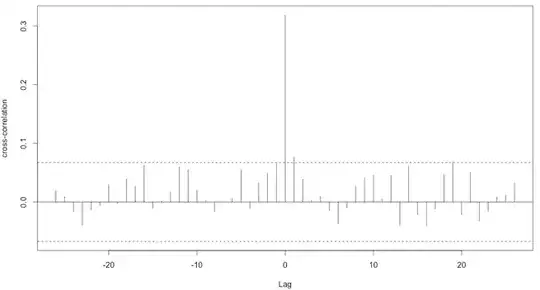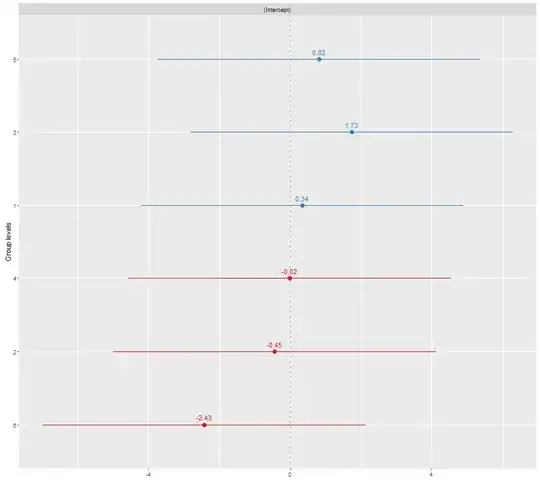Suppose that I have the following dataset in R:
library(lme4)
data(Machines,package='nlme')
mydata <- Machines[Machines$Machine!='C',]
There are 3 levels with the factor Machine, so the last line above is meant to limit to only two levels (A and B) of the factor Machine. With the following model:
print(lmer(score ~ 1 + (1|Worker/Machine), data=mydata), ranef.comp="Var")
I have the variance components in the output as shown below:
Random effects:
Groups Name Variance
Machine:Worker (Intercept) 46.00
Worker (Intercept) 13.84
Residual 1.16
I have trouble understanding exactly what the first two components are: Machine:Worker and Worker. Specifically,
1) What is the variance for Worker corresponding to the base (or reference) level of the factor Machine? If so, what is the base level: the first level A in the dataset or alphabetically the first level A (it happens to be the same in this particular dataset)?
2) What is the variance for Machine:Worker? Is it the variance for the second level of the factor Machine, or the extra variance relative to the variance for Worker?
Furthermore, for the model with the original dataset in which the factor Machine has 3 levels,
print(lmer(score ~ 1 + (1|Worker/Machine), data=Machines), ranef.comp="Var")
what is the variance for Machine:Worker in the following result since there are 3 levels involved in the factor Machine?
Random effects:
Groups Name Variance
Machine:Worker (Intercept) 60.2972
Worker (Intercept) 7.3959
Residual 0.9246

